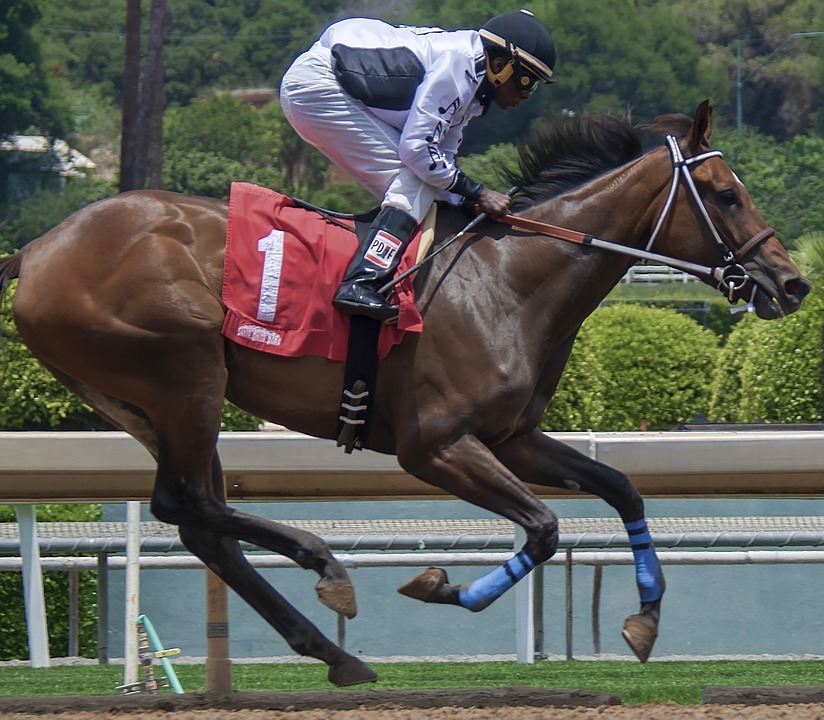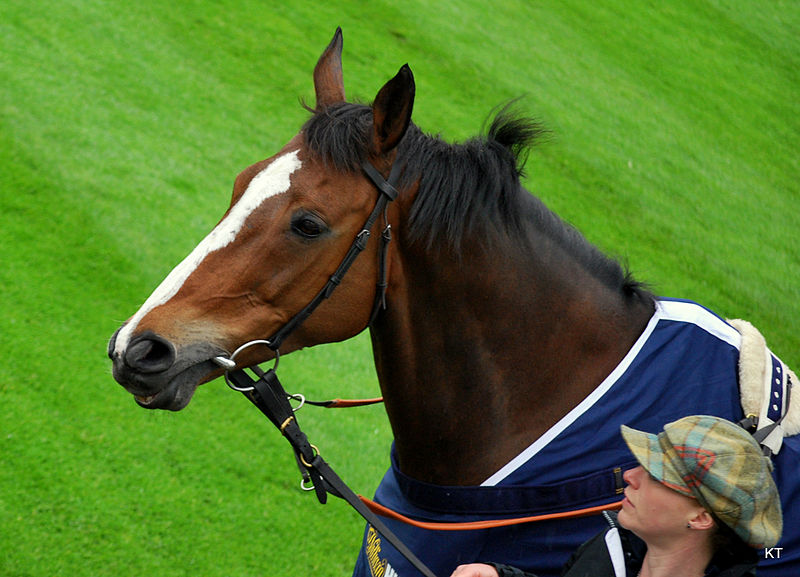Handicapping Horses
Handicapping horses in 5 easy steps:
When you want to excel in sports betting, especially in horse betting, you should always go back to the basics.
Aside from learning the ropes of horse betting, betting types, and understanding how the entire betting system works, a good sports bettor should always know how to handicap horses.
 Handicapping Horses
Handicapping HorsesIn the world of horse betting, you might have come across the term already, and it is sometimes referred to as a technique that leads many expert bettors to win big-time income.
But either you're a professional bettor or a beginner, you can learn handicapping and master it. Even so, handicapping horses' techniques varies from one to another.
There are fundamental core elements that you should set store by and use as a reference.
Handicapping horses the easy way
Learning to handicap horses doesn't happen overnight. It requires patience, time, and consistent learning of the technique.
But learning shouldn't be as difficult as some would have you believe.
So, to get you started, here are five easy steps to handicapping like a professional bettor and applying them to upcoming events such as the TVG latest races.
1. Form and Fitness
Handicapping horses should always refer and look at the primary consideration: the physique of the horse. This is one of the essential things in handicapping.
You must make sure that the horse is fit and healthy to run the race. But you shouldn't only look at how the horse is doing on the race day, but you should also consider how it has performed in previous races or has the horse previously run multiple races.
The top factors you should look at in terms of form and fitness of the horse are how it performs during a string of workouts, previous race results, and health reports of how the horse was prepared and trained for the upcoming race.
2. Ability
This one factor in handicapping is a bit tricky as each horse's ability depends on many things.
Some horses run fast on a dirt track, some horses perform well on a muddy track, and some horses record their best run on a turf track.
So you see, there's a lot to consider when it comes to a horse's abilities.
But you can only come to a reasonable conclusion and decision if you have thoroughly performed research on each horse.
You must also not forget to include a consideration of how good their jockeys are.
Some horses may prefer to be held up in the early stages of the race but with a capable and quick-witted jockey are able to weave through tiring horses.
 Jockeys await their mounts
Jockeys await their mounts3. Identify The Pace
This is the part where you need to look and compare the horse's recent race results. The first thing you should do is look at the horse's recent runs at the same distance you're handicapping it.
If the horse didn't run the same distance, look at the closest data. You can determine if the horse is a slow-burner or a sprinter, as it will be shown in its final track time.
You also need to check the position they finished the race. If they rank between the third to first, then you can check include them in your list.
Also, perform further research on the top three horses and their speed in their recent starts. From there, you can start identifying which horses perform the best and include them in your handicapping choices.
4. Eliminate The Career Maiden
This is the easiest part when it comes to handicapping horses. You need to eliminate the career maiden among the group of horses.
Career maiden is a horse that hasn't won a single race in a long string of race history. This is very easy to spot the moment you start to perform your research on every horse.
Once you have checked each horse's history, you can spot a career maiden easily. Even if the horse is ranked in fifth or fourth, but has a poor track record, you still need to eliminate it from your list.
Career maidens are tricky on the track, which is why there are still some bettors who place a bet on them and end up losing.
5. Team Changes
Abrupt jockey and trainer changes can either mean two things: the horse is not performing well with the last jockey, or the current jockey might lead the horse to future wins. You need to be very careful in using this perspective when it comes to handicapping horses.
Some horses are slow-pacers and mid-runners, but a professional jockey can lead them down the track and dash right through to winning the race.
While other jockeys lack confidence in their mount and feel the horse is not up to the challenge.
So if you spot that there's a recent change with your horse's team in your selection list, highlight the changes and look it up.
The first thing you should do is look at the jockeys' record, most especially how he performs on the mount. Also, read on how the trainer partnered with him in riding and training the horse.
To Conclude
Handicapping horses requires quite a few strategies and techniques. But aside from that, it requires diligence in studying the horses, understanding the results, and digging deep into some intricacies of horse betting.
You wouldn’t end up being an expert at handicapping overnight, but you can learn them through easy ways.
Though there are different methods out there, you can always start with the fundamental elements and learn your way through experts and other horse betting professionals.

You Might Like These
Kentucky Derby Odds: Will there be a hometown favorite?
Preakness Stakes Odds: Will the champions face fresh challengers?
Belmont Stakes Odds: At 1½ miles, stamina becomes the great equalizer as longshots can threaten.
Breeders' Cup Odds: International talent collides with American speed, reshuffling expectations across the board.
Dubai World Cup Odds: Under desert lights, can a Japanese sensation prevail against the world's elite.
Pegasus Cup Odds: Retirement beckons for champions seeking one final payday at America's richest race.
Bet on Horses: Every wager tells a story of hope against mathematical probability.
Kentucky Derby Betting: Beneath fancy hats and mint juleps, fortunes change hands with each thundering hoof.
Preakness Stakes Betting: The middle jewel rewards those who recognize when Derby form holds true.
Belmont Stakes Betting: Distance separates champions from pretenders when the final furlong tests them all.
Breeders Cup Betting: Global racing converges for two days where value hides in plain sight.

Returns Policy: Once a customer has agreed to pay for a product or service no returns will be permitted or payments returned.
All PayPal transactions are subject to the PayPal Privacy Policy
Privacy Policy: Personal details provided to this site by an individual may be shared with third parties unless requested otherwise.
Above policies updated 15 March 2018





